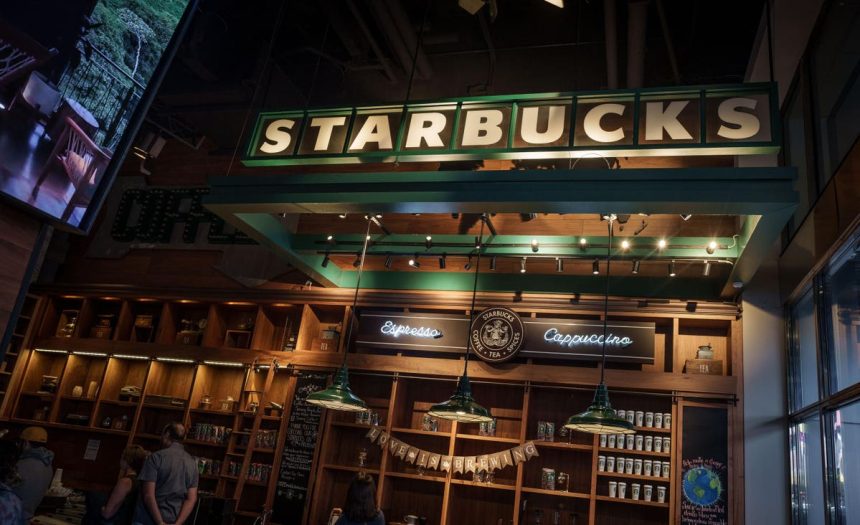[Note: Starbucks
SBUX
Starbucks stock (NASDAQ
NDAQ
Interestingly, SBUX stock had a Sharpe Ratio of 0.4 since early 2017, which is lower than the figure of 0.6 for the S&P 500 Index over the same period. Compare this with the Sharpe of 1.2 for the Trefis Reinforced Value portfolio. Sharpe is a measure of return per unit of risk, and high-performance portfolios can provide the best of both worlds.
Returning to the pre-inflation shock level means that Starbucks will have to gain about 31% from here. While it has the potential to recover to those levels, we estimate Starbucks’ Valuation to be around $109 per share, almost 13% higher than the current market price. It is important to keep an eye on freight rates as rising fuel costs could be a risk moving forward. Our detailed analysis of Starbucks’ upside post-inflation shock captures trends in the company’s stock during the turbulent market conditions seen over 2022 and compares these trends to the stock’s performance during the 2008 recession.
2022 Inflation Shock
Timeline of Inflation Shock So Far:
- 2020 – early 2021: Increase in money supply to cushion the impact of lockdowns led to high demand for goods; producers were unable to match up.
- Early 2021: Shipping snarls and worker shortages from the coronavirus pandemic continue to hurt the supply
- April 2021: Inflation rates cross 4% and increase rapidly
- Early 2022: Energy and food prices spike due to the Russian invasion of Ukraine. Fed begins its rate hike process
- June 2022: Inflation levels peak at 9% – the highest level in 40 years. S&P 500 index declines more than 20% from peak levels.
- July – September 2022: Fed hikes interest rates aggressively – resulting in an initial recovery in the S&P 500 followed by another sharp decline
- Since October 2022: Fed continues rate hike process; improving market sentiments help S&P500 recoup some of its losses
In contrast, here’s how SBUX stock and the broader market performed during the 2007/2008 crisis.
Timeline of 2007-08 Crisis
- 10/1/2007: Approximate pre-crisis peak in S&P 500 index
- 9/1/2008 – 10/1/2008: Accelerated market decline corresponding to Lehman bankruptcy filing (9/15/08)
- 3/1/2009: Approximate bottoming out of S&P 500 index
- 12/31/2009: Initial recovery to levels before accelerated decline (around 9/1/2008)
SBUX and S&P 500 Performance During 2007-08 Crisis
SBUX stock declined from nearly $13 in October 2007 (pre-crisis peak) to around $5 in March 2009 (as the markets bottomed out), implying that SBUX stock lost almost 65% of its pre-crisis value. It recovered from the 2008 crisis to levels of around $12 in early 2010, rising roughly 152% between March 2009 and January 2010. The S&P 500 Index saw a decline of 51%, falling from levels of 1,540 in September 2007 to 757 in March 2009. It then rallied 48% between March 2009 and January 2010 to reach levels of 1,124.
SBUX Fundamentals Over Recent Years
SBUX revenues declined from around $26.5 billion in 2019 to about $23.5 billion in 2020, due to the impact of Covid-19. However, sales rose to $32.3 billion in 2022, as demand picked up. Earnings per share declined from around $2.95 in 2019 to only $0.79 in 2020, although it rose back to about $3.57 in 2021 before falling back to $2.85 in 2022. In 2022, inflation has curbed consumer spending and pushed up freight costs for the company, as well as supply chain challenges. Higher expenses like labor and commodities and the restrictions in China resulted in operating margins reaching 14.3% in FY’22 down from 16.8% in FY’21.
Conclusion
With the Fed’s efforts to tame runaway inflation rates helping market sentiment, we believe SBUX stock has the potential for strong gains once fears of a potential recession are allayed.
It is helpful to see how its peers stack up. SBUX Peers shows how Starbucks’ stock compares against peers on metrics that matter. You will find other useful comparisons for companies across industries at Peer Comparisons.
Invest with Trefis Market Beating Portfolios
See all Trefis Price Estimates
Read the full article here




